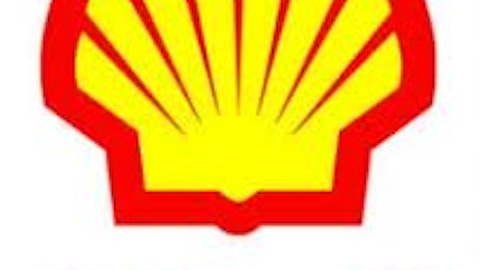According to the Energy Information Administration, electricity consumption in the U.S. will increase from 3,841 billion kilowatt hours in 2011 to 4,930 billion kilowatt hours in 2040. The consumption rate will rise at an annual rate of 0.90%. This demand is triggered by improvement in the housing sector, global warming, and the ever increasing population. To cater to this, utility companies are playing an active role with expansion in their power generation capacity.
Let’s discuss in detail what strategic moves the three utility companies I am discussing here will make to meet the growing demands.
Better prospects owed to growth in natural gas sales and new venture
Dominion Resources, Inc. (NYSE:D) has three segments: Dominion Virginia Power, Dominion Energy, and Dominion Generation. Its major segment of electric utility, Dominion Virginia Power, expects an increase in operating expenses from $2.45 billion in the first quarter of 2013 to $2.54 billion in the first quarter of 2014. To overcome these losses from expenses, Dominion Resources is shifting its focus towards its energy segment.
Dominion Resources, Inc. (NYSE:D) Energy’s gas sales volume grew 8.8% year over year in the first quarter of 2013. To strengthen this segment, the company, in April 2013, announced the building of a $3.4 billion plant in Utica to export natural gas. Announcement of this project was made looking at the opportunities in natural gas production in this region. In 2013, 12.83 million cubic feet of natural gas was produced in Utica from 650 wells that are expected to rise by 334 by the end of 2013.
Dominion Resources, Inc. (NYSE:D) Energy also announced that it has deals with India and Japan to buy the gas that will be produced from the project. According to the International Energy Agency, natural gas demand is expected to increase at a rate of 5.4% annually over 2007-2030 in India. The increased demand from India provides further growth prospects for the project. The revenue from natural gas export is expected to rise from $2.43 billion in the first quarter of 2013 to $2.61 billion in the first quarter of 2014.
Dominion Resources, Inc. (NYSE:D) Resources formed a $1.5 billion joint venture, Blue Racer, with Caiman Energy in December 2012 to provide midstream services to natural gas producers in Utica. Midstream services include transportation, storage, and wholesale marketing of natural gas and refined petroleum products. The increasing number of natural gas wells in this region will account for better growth opportunities for Dominion Resources. Due to this venture, the company’s mid-stream earnings are expected to rise from $44 million in 2013 to around $65 million in 2014.
Mixed results from profit in merger and loss in international business segment
Duke Energy Corp (NYSE:DUK) merged with Progress Energy in July 2012 to become the number one in electric utility in the U.S. The merger was done to save non-fuel operating expenses and for savings related to fuels and transmission. Duke Energy’s customer base increased from 5.4 million to 7.1 million after the merger.
Post-merger Duke Energy Corp (NYSE:DUK) reported total non-fuel operations cost savings of $52 million in the last two quarters of 2012. The company expects fuels and transmission savings of at least $650 million over the next five years. Following these positive figures, company’s revenue is expected to increase from $24.7 billion in 2013 to $26 billion in 2014.
The international business segment of Duke Energy Corp (NYSE:DUK) saw losses. 90% of this segment’s revenue comes from its Brazilian operations. The income of the segment decreased to $97 million in the first quarter of 2013 from $142 million in the previous quarter. This was primarily due to losses incurred in Brazil. The reasons were low electricity consumption and low rainfall in Brazil.
Currently, electricity consumption in Brazil is only 2,384 kilowatt hours, compared to 13,394 kilowatt hours in the U.S. Water is the primary source of electricity generation in Brazil and, due to less rainfall and less reservoir levels, cost of hydro-generator plants increased in the first quarter of 2013. The loss on account of less electricity consumption and low waterfall will ultimately lead to losses for Duke Energy Corp (NYSE:DUK).
Cost overrun and new projects call for hold
On April 23, 2013, The Southern Company (NYSE:SO) announced cost overrun for its new Kemper County plant in Mississippi. The plant’s construction started in 2012 and is expected to start generating electricity from December 2014. In the first quarter of 2013, Southern Company increased its cost estimation from $2.88 billion to $3.42 billion owing to cost pressure from labor, raw materials, and engineering costs.
The company is facing continuous opposition on this project from the Sierra club, an environmental organisation. The club claims that on completion of the project, the electricity plant will eliminate 20,000 acres of prime forest land. Losses from continuous opposition and cost pressure have already brought down the company’s net income to $81 million in first quarter of 2013, from $368 million of last year’s first quarter.
Southern Company announced construction of the Vogtle 3 and 4 nuclear projects that will be completed by 2017 and 2018, respectively. The plants will be the largest job-producing projects in Georgia, employing 5,000 people during peak construction season, thereby decreasing the current unemployment rate of 9.2%. The significance of the projects lies in the fact that electricity demand is expected to increase by 27% in this region by 2030.
In 2012, the cost of electricity produced from nuclear plants was 2.40 cents per kilowatt hour, compared to 3.40 cents per kilowatt hour of electricity produced from the nearest alternative natural gas in the U.S. The rise in demand of electricity and cheaper nuclear energy will bolster growth for the projects in the long-term.





